Jose Rizal in Hong Kong
While Hong Kong is known all over the world for its modern architecture, diverse cuisine, and 24-hour shopping, Filipinos relate to this former British colony on a much deeper level. Its very streets are fertile with the history our nation.
Hong Kong has provided passage and safe haven to some of the country’s most prominent political figures at the time of the nation’s founding. Many have since been included in the roster of national heroes.

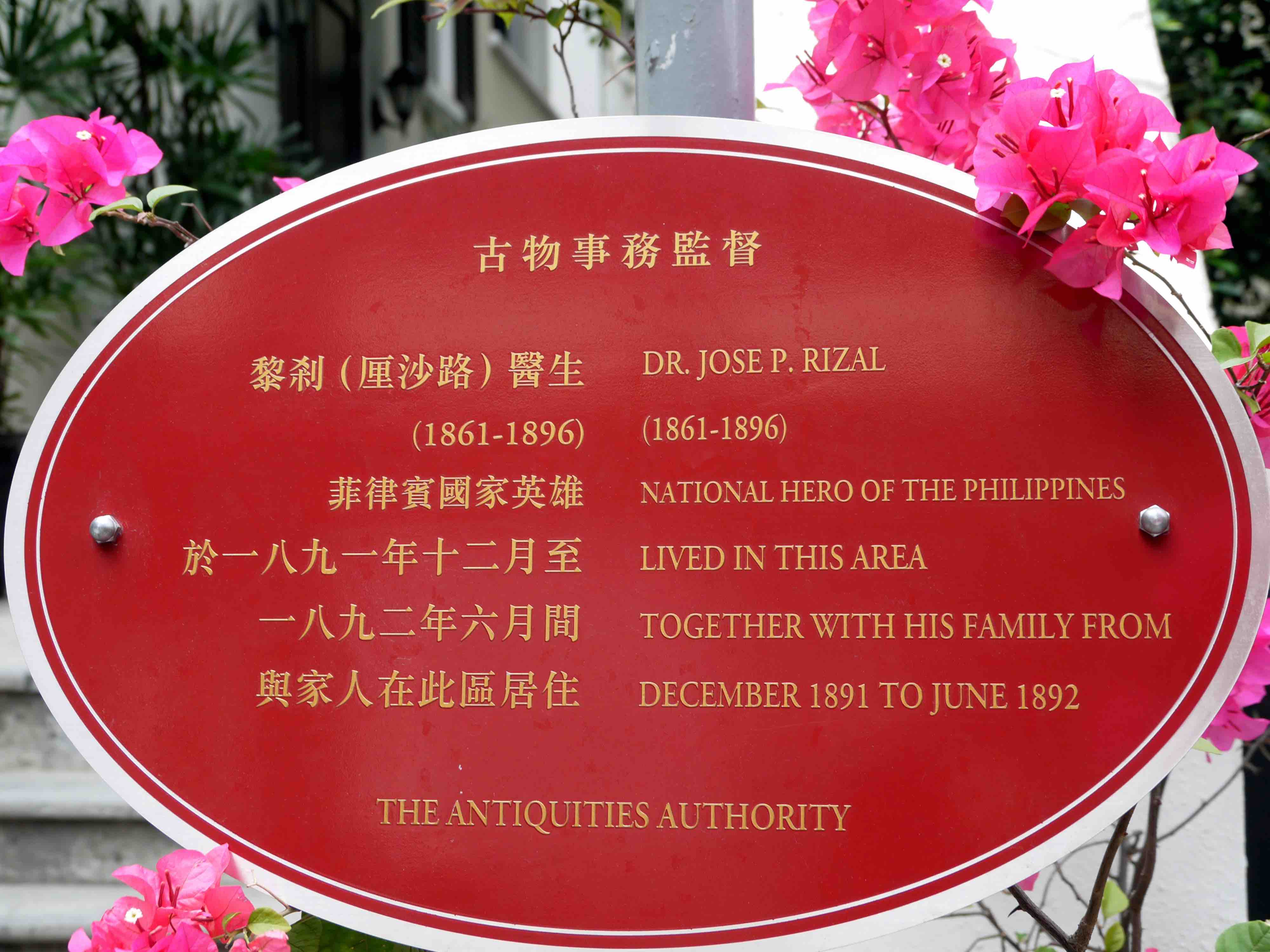
Marcelo H. Del Pilar became the editor of the La Solidaridad while in Hong Kong. Marcela Agoncillo sewed the Philippine flag there. Emilio Aguinaldo was exiled there. Juan Luna died there. But most of all, Jose Rizal—the country’s foremost national hero—lived there, with traces of his brief but productive stay still evident in the city.
Central in Hong Kong Island—the heart of the territory’s financial district—is home to the world’s longest outdoor, covered escalator system called the Mid-levels. The scenic ride on this 800-meter escalator is also a journey to some of the city’s most historic enclaves including Rednaxela Terrace where Rizal once lived.

He arrived in the city in November 1891, where he was welcomed by his friend, Jose Ma. Besa. By December, he was joined by his family who left the Philippines after losing a legal battle with the Dominicans which resulted in their eviction from their hometown, Calamba. They all settled together at No. 2 Rednaxela.
Like much of Hong Kong’s past, the structure where the Rizal family lived has long since been demolished. But in 2004, the Hong Kong government through the Hong Kong Antiquities Authority erected a marker identifying the location’s historical importance. With lush bougainvillea flowers around the sign, it remains a prominent site easily identifiable on the right side as one rides up the mid-levels from Hollywood Road heading to Mosque Road and beyond.
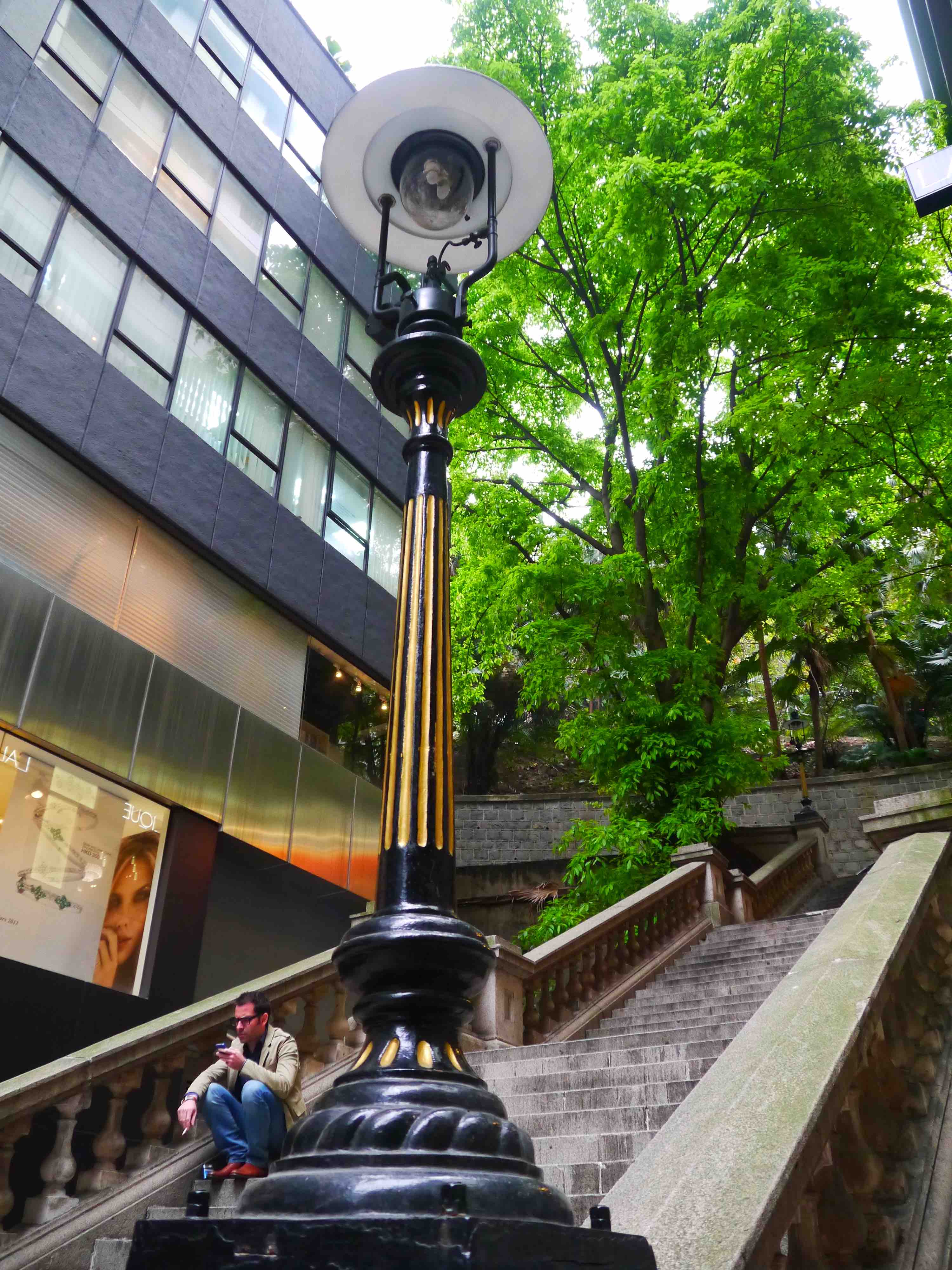
Rednaxela Terrace itself has remained a residential area but is now surrounded by many quaint shops and unique bars flanking the entire stretch of the escalator.
While Rizal did not enjoy the convenience of the Mid-levels during his time in Hong Kong, it would not be difficult to imagine him enjoying a stroll on Hong Kong’s sloping terrain to make his way to D’Aguilar Street where his clinic was located.
He would have certainly walked on the granite steps along Lyndhurst Terrace–the low-rise stairs being one of the very few remaining original structures of that era in that area.


After the stress of publishing his second novel, El Filibusterismo (which earned him further ire of the Spanish government), and the heated disagreements with Del Pilar on the leadership of the Filipino expats in Europe, the company of his family whom he had not seen in a long time was a welcome change for Rizal. Though in exile, the new city offered them a new life.
In Hong Kong, he established himself as an ophthalmic surgeon after successfully operating on his mother’s left eye. The locals referred to him as “the Spanish doctor”—“Spanish” being a term often used to refer to educated Filipinos. As his reputation grew, his practice flourished. A surviving business card (now on display at Fort Santiago in Intramuros) revealed that his clinic hours were between 2 and 6 p.m.

Just like Rednaxela Terrace, No. 5 D’Aguilar Street has also been demolished in favor of a modern high-rise. Sitting on that lot today is Century Square—home to offices, restaurants, and a hair salon. Pedestrians walking along the D’Aguilar entrance would often miss that red marker identifying the site as the clinic of the national hero. The Hong Kong Antiquities Authority described him as a “physician, poet, author and patriot.”
Though they never met in Hong Kong, it was Rizal’s reputation as an ophthalmic surgeon that brought him to Josephine Bracken’s radar. Bracken was born and raised in the territory.
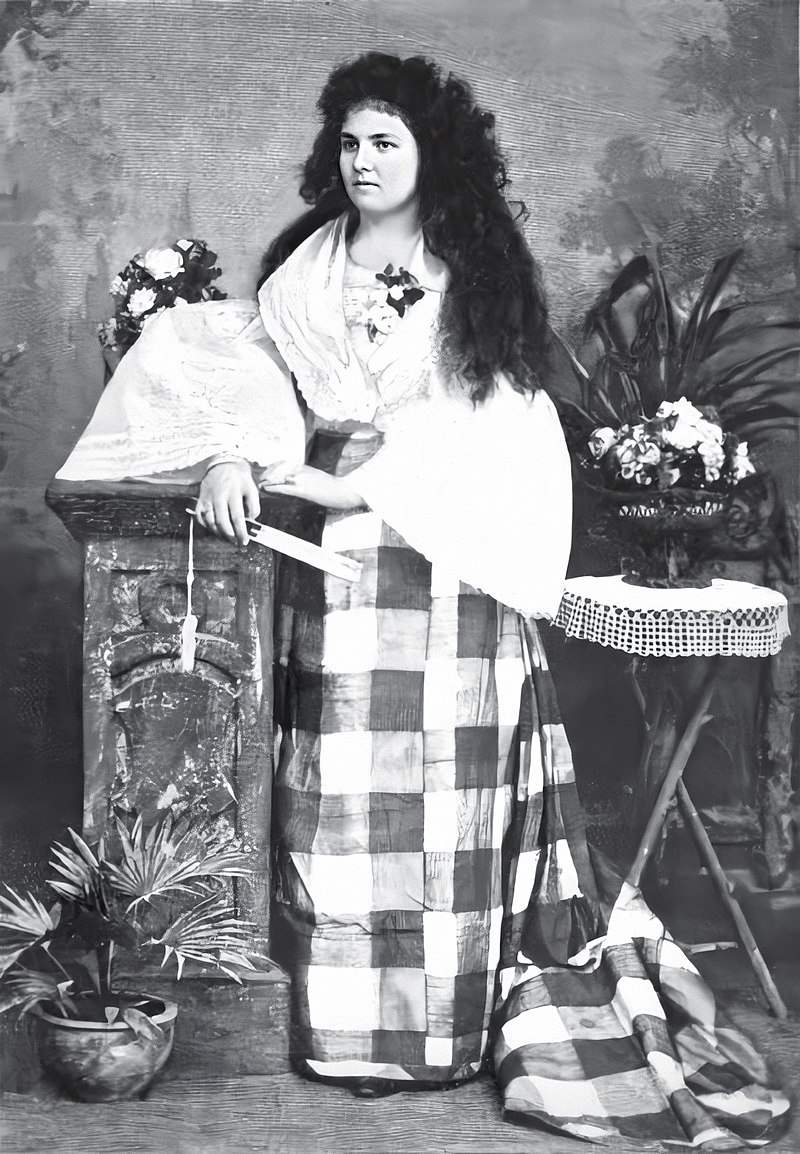
Her adoptive father was afflicted with cataract and was almost blind when she heard of the “Spanish doctor” and his successful practice. By then, he had returned to the Philippines and was in exile in Dapitan. Bracken and her adoptive father made the journey to Zamboanga del Norte but by then it was too late to save his eyesight. It was in Dapitan where Rizal and Bracken fell in love.
They lived together until his execution in 1896. Even after his death, she continued to aid the revolutionary forces by tending to the wounded, among other duties. Eventually, she was forced to return to Hong Kong after being threatened by torture and imprisonment by the Spanish Governor-General. She died in 1902 and is buried at the Happy Valley Cemetery.
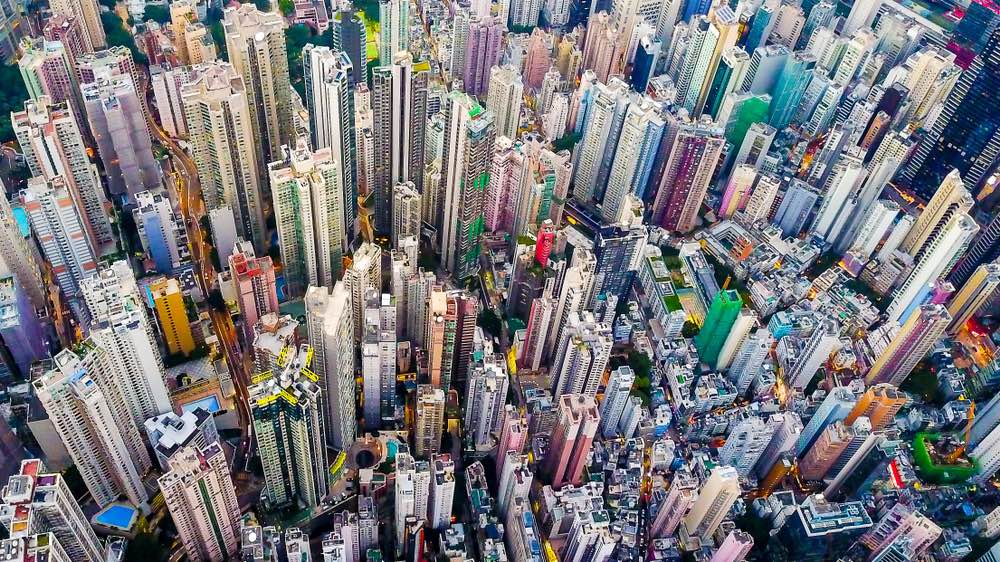
Despite the city’s constant reinvention, a few structures from Rizal’s Hong Kong still stands. The Cathedral of the Immaculate Concepcion (1883) located at Caine Street near his residence at the mid-levels would have reminded him of his Catholic upbringing. The Hong Kong Observatory, established in the same year as the cathedral, would have warned him of incoming storms.
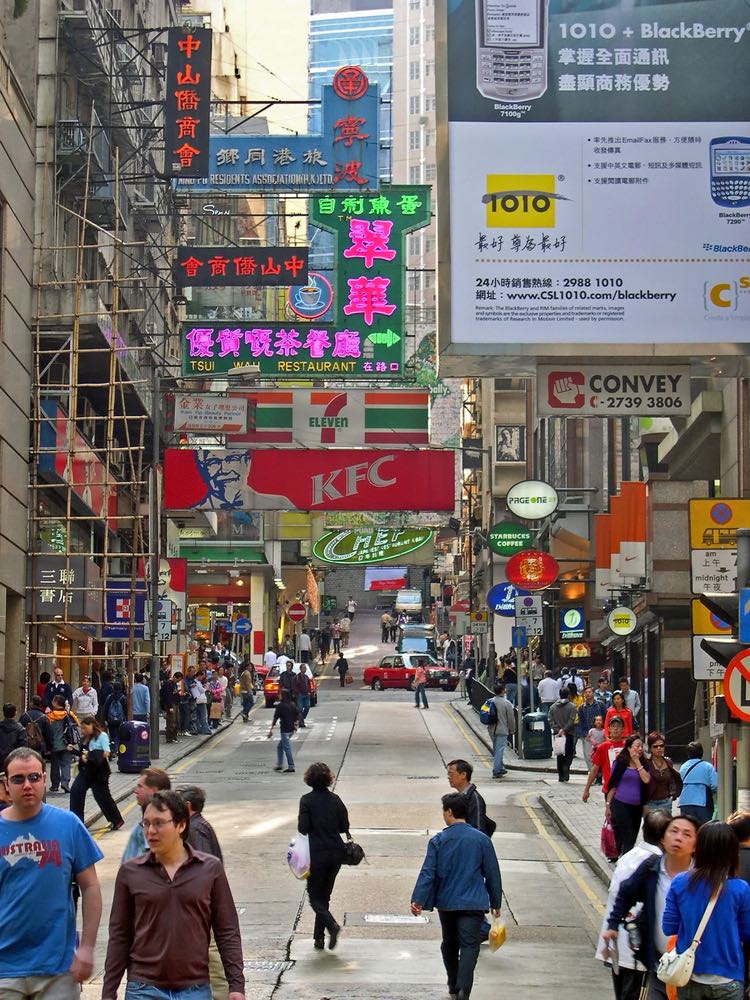
He would have seen the Murray House – a Victorian-era officers’ quarters – at its original site in Admiralty. It was later dismantled, brick by brick, and transferred to Stanley where it still stands today. And he would have certainly walked up and down the stone steps of Dudell Street, just a stone’s throw away from his D’Aguilar clinic, where the last remaining gaslit lamps of Hong Kong can still be found.
Today, Hong Kong is home to over 380,000 overseas Filipino workers whose earnings sent home to their families have sustained the Philippine economy for decades. Over a hundred years later, Hong Kong still continues to foster and nurture Filipino heroes.


